Nobel Prize winners in Physics since 1901 and upto till date
The Nobel Prize in Physics award has been granted annually since 1901 to scientists who make remarkable breakthroughs in the field of technology and science.
To this date, it is one of the most prestigious awards within the scientific community.
What It’s About
Prizes are awarded to individuals who aid mankind in comprehending the world, from the minutest atom to non-ending space.
New laws of physics are discovered by some winners like Einstein’s theory of relativity and quantum mechanics, which is the science of tiny particles.
Other winners created powerful inventions that are foundational to technology today, such as lasers and transistors.
Some of the famous Nobel Prize Winners in Physics
Albert Einstein (1921) – Photoelectric effect, foundation of quantum mechanics.
Marie Curie (1903) – Discovery of radioactivity, first woman to win a Nobel Prize.
Niels Bohr (1922) – Bohr model of the atom, key contributions to quantum theory.
Werner Heisenberg (1932) – Uncertainty Principle, fundamental to quantum mechanics.
Erwin Schrödinger (1933) – Wave mechanics and Schrödinger’s equation.
Paul Dirac (1933) – Dirac equation, predicted antimatter.
Enrico Fermi (1938) – Nuclear reactions, key to nuclear power and atomic bomb.
Richard Feynman, Julian Schwinger, Sin-Itiro Tomonaga (1965) – Quantum electrodynamics (QED).
Abdus Salam, Sheldon Glashow, Steven Weinberg (1979) – Unification of weak and electromagnetic forces.
Subrahmanyan Chandrasekhar (1983) – Chandrasekhar limit, black hole formation.
John Bardeen (1956 & 1972) – Only physicist to win twice; work on semiconductors and superconductivity.
Peter Higgs, François Englert (2013) – Predicted the Higgs boson, discovered at CERN.
Donna Strickland (2018) – Ultra-short laser pulses, third woman to win in physics.
Roger Penrose (2020) – Mathematical proof of black hole formation.
Let's see the list of all Nobel Laureates in Physics
|
Year |
Laureates |
Achievement |
|
1901 |
Wilhelm Conrad Röntgen |
Discovery of X-rays (Röntgen rays) |
|
1902 |
Hendrik A. Lorentz, Pieter Zeeman |
Research into the influence of magnetism on radiation phenomena |
|
1903 |
Henri Becquerel |
Discovery of spontaneous radioactivity |
|
1903 |
Pierre Curie, Marie Curie |
Researches on radiation phenomena discovered by Henri Becquerel |
|
1904 |
Lord Rayleigh |
Investigations of gas densities and discovery of argon |
|
1905 |
Philipp Lenard |
Work on cathode rays |
|
1906 |
J.J. Thomson |
Theoretical and experimental investigations on the conduction of electricity by gases |
|
1907 |
Albert A. Michelson |
Optical precision instruments and spectroscopic/metrological investigations |
|
1908 |
Gabriel Lippmann |
Method of reproducing colors photographically based on interference |
|
1909 |
Guglielmo Marconi, Ferdinand Braun |
Contributions to the development of wireless telegraphy |
|
1910 |
Johannes Diderik van der Waals |
Work on the equation of state for gases and liquids |
|
1911 |
Wilhelm Wien |
Discoveries regarding the laws governing the radiation of heat |
|
1912 |
Gustaf Dalén |
Invention of automatic regulators for use in conjunction with gas accumulators for illuminating lighthouses and buoys |
|
1913 |
Heike Kamerlingh Onnes |
Investigations on the properties of matter at low temperatures, leading to the production of liquid helium |
|
1914 |
Max von Laue |
Discovery of the diffraction of X-rays by crystals |
|
1915 |
William Bragg, Lawrence Bragg |
Services in the analysis of crystal structure by means of X-rays |
|
1916 |
No award |
Prize money allocated to the Special Fund |
|
1917 |
Charles Glover Barkla |
Discovery of the characteristic Röntgen radiation of the elements |
|
1918 |
Max Planck |
Discovery of energy quanta, advancing the field of Physics |
|
1919 |
Johannes Stark |
Discovery of the Doppler effect in canal rays and the splitting of spectral lines in electric fields |
|
1920 |
Charles Edouard Guillaume |
Discovery of anomalies in nickel steel alloys, aiding precision measurements in physics |
|
1921 |
Albert Einstein |
Photoelectric effect law |
|
1929 |
Louis de Broglie |
Wave nature of electrons |
|
1930 |
C.V. Raman |
Raman scattering discovery |
|
1932 |
Werner Heisenberg |
Quantum mechanics and hydrogen allotropes |
|
1933 |
Erwin Schrödinger, Paul Dirac |
New atomic theory contributions |
|
1935 |
James Chadwick |
Discovery of the neutron |
|
1936 |
Victor Hess, Carl Anderson |
Discovery of cosmic rays; Discovery of positron |
|
1937 |
Clinton Davisson, George P. Thomson |
Electron diffraction by crystals |
|
1938 |
Enrico Fermi |
Discovery of neutron-induced radioactivity and nuclear reactions |
|
1939 |
Ernest Lawrence |
Cyclotron invention and artificial radioactive elements |
|
1940 - 42 |
No Prize Awarded |
Due to World War II |
|
1943 |
Otto Stern |
Molecular ray method and proton magnetic moment discovery |
|
1944 |
Isidor Isaac Rabi |
Resonance method for atomic nuclei magnetic properties |
|
1945 |
Wolfgang Pauli |
Exclusion Principle discovery |
|
1946 |
Percy W. Bridgman |
High-pressure physics and experimental apparatus development |
|
1947 |
Edward V. Appleton |
Physics of the upper atmosphere, discovery of the Appleton layer |
|
1948 |
Patrick M.S. Blackett |
Wilson cloud chamber developments and nuclear physics discoveries |
|
1949 |
Hideki Yukawa |
Prediction of mesons from nuclear force theory |
|
1950 |
Cecil Powell |
Photographic method for nuclear processes, meson discoveries |
|
1951 |
John Cockcroft, Ernest T.S. Walton |
Nuclear transmutation via accelerated particles |
|
1952 |
Felix Bloch, E. M. Purcell |
Nuclear magnetic precision measurement methods |
|
1953 |
Frits Zernike |
Phase contrast method and microscope invention |
|
1954 |
Max Born, Walther Bothe |
Quantum mechanics statistical interpretation; Coincidence method in nuclear physics |
|
1955 |
Willis E. Lamb, Polykarp Kusch |
Hydrogen fine structure; Electron's magnetic moment determination |
|
1956 |
William B. Shockley, John Bardeen, Walter H. Brattain |
Discovery of the transistor effect |
|
1957 |
Chen Ning Yang, Tsung-Dao Lee |
Investigations of parity laws, leading to discoveries in elementary particles |
|
1958 |
Pavel A. Cherenkov, Il´ja M. Frank, Igor Y. Tamm |
Discovery and interpretation of the Cherenkov effect |
|
1959 |
Emilio Segrè, Owen Chamberlain |
Discovery of the antiproton |
|
1960 |
Donald A. Glaser |
Invention of the bubble chamber |
|
1961 |
Robert Hofstadter, Rudolf Mössbauer |
Electron scattering studies of nuclei; Discovery of Mössbauer effect |
|
1962 |
Lev Landau |
Theories of condensed matter, especially liquid helium |
|
1963 |
Eugene Wigner, Maria Goeppert Mayer, J. Hans D. Jensen |
Fundamental symmetry principles; Nuclear shell structure |
|
1964 |
Charles H. Townes, Nicolay G. Basov, Aleksandr M. Prokhorov |
Work in quantum electronics, leading to maser-laser principles |
|
1965 |
Sin-Itiro Tomonaga, Julian Schwinger, Richard P. Feynman |
Quantum electrodynamics with deep implications for particle physics |
|
1966 |
Alfred Kastler |
Optical methods for studying Hertzian resonances in atoms |
|
1967 |
Hans Bethe |
Contributions to nuclear reaction theory, especially energy production in stars |
|
1968 |
Luis Alvarez |
Development of hydrogen bubble chamber techniques and discovery of resonance states |
|
1969 |
Murray Gell-Mann |
Classification of elementary particles and their interactions |
|
1970 |
Hannes Alfvén, Louis Néel |
Discoveries in magnetohydrodynamics and plasma physics; Antiferromagnetism and ferrimagnetism |
|
1971 |
Dennis Gabor |
Invention and development of the holographic method |
|
1972 |
John Bardeen, Leon N. Cooper, Robert Schrieffer |
Development of the BCS theory of superconductivity |
|
1973 |
Leo Esaki, Ivar Giaever, Brian D. Josephson |
Discoveries in tunneling phenomena in semiconductors and superconductors; Josephson effects |
|
1974 |
Martin Ryle, Antony Hewish |
Pioneering research in radio astrophysics, aperture synthesis technique, and pulsar discovery |
|
1975 |
Aage N. Bohr, Ben R. Mottelson, James Rainwater |
Connection between collective and particle motion in atomic nuclei, leading to nuclear structure theory |
|
1976 |
Burton Richter, Samuel C.C. Ting |
Discovery of a heavy elementary particle of a new kind |
|
1977 |
Philip W. Anderson, Sir Nevill F. Mott, John H. Van Vleck |
Theoretical investigations of electronic structures in magnetic and disordered systems |
|
1978 |
Pyotr Kapitsa, Arno Penzias, Robert Woodrow Wilson |
Inventions in low-temperature physics; Discovery of cosmic microwave background radiation |
|
1979 |
Sheldon Glashow, Abdus Salam, Steven Weinberg |
Contributions to the unified weak and electromagnetic interaction theory |
|
1980 |
James Cronin, Val Fitch |
Discovery of violations of fundamental symmetry principles in the decay of neutral K-mesons |
|
1981 |
Nicolaas Bloembergen, Arthur L. Schawlow, Kai M. Siegbahn |
Development of laser spectroscopy; High-resolution electron spectroscopy |
|
1982 |
Kenneth G. Wilson |
Theory for critical phenomena in phase transitions |
|
1983 |
Subrahmanyan Chandrasekhar, William A. Fowler |
Theoretical studies of stellar structure and evolution; Studies of nuclear reactions forming chemical elements |
|
1984 |
Carlo Rubbia, Simon van der Meer |
Decisive contributions leading to the discovery of the W and Z bosons, mediators of weak interaction |
|
1985 |
Klaus von Klitzing |
Discovery of the quantized Hall effect |
|
1986 |
Ernst Ruska, Gerd Binnig, Heinrich Rohrer |
Fundamental work in electron optics, first electron microscope; Design of the scanning tunneling microscope |
|
1987 |
J. Georg Bednorz, K. Alex Müller |
Breakthrough in the discovery of superconductivity in ceramic materials |
|
1988 |
Leon M. Lederman, Melvin Schwartz, Jack Steinberger |
Neutrino beam method and discovery of the muon neutrino, demonstrating the doublet structure of leptons |
|
1989 |
Norman F. Ramsey, Hans G. Dehmelt, Wolfgang Paul |
Invention of the separated oscillatory fields method; Development of the ion trap technique |
|
1990 |
Jerome I. Friedman, Henry W. Kendall, Richard E. Taylor |
Pioneering investigations of deep inelastic scattering, crucial for the quark model in particle physics |
|
1991 |
Pierre-Gilles de Gennes |
Generalizing methods for studying order phenomena in simple systems to complex matter like liquid crystals and polymers |
|
1992 |
Georges Charpak |
Invention and development of particle detectors, particularly the multiwire proportional chamber |
|
1993 |
Russell A. Hulse, Joseph H. Taylor Jr. |
Discovery of a new type of pulsar, opening new possibilities for gravitation studies |
|
1994 |
Bertram N. Brockhouse, Clifford G. Shull |
Development of neutron spectroscopy; Development of neutron diffraction technique |
|
1995 |
Martin L. Perl, Frederick Reines |
Discovery of the tau lepton; Detection of the neutrino |
|
1996 |
David M. Lee, Douglas D. Osheroff, Robert C. Richardson |
Discovery of superfluidity in helium-3 |
|
1997 |
Steven Chu, Claude Cohen-Tannoudji, William D. Phillips |
Development of methods to cool and trap atoms with laser light |
|
1998 |
Robert B. Laughlin, Horst L. Störmer, Daniel C. Tsui |
Discovery of a new form of quantum fluid with fractionally charged excitations |
|
1999 |
Gerardus 't Hooft, Martinus J.G. Veltman |
Elucidating the quantum structure of electroweak interactions in physics |
|
2000 |
Zhores Alferov, Herbert Kroemer, Jack Kilby |
For basic work on information and communication technology, including semiconductor heterostructures and the integrated circuit |
|
2000 |
Zhores Alferov, Herbert Kroemer |
Development of semiconductor heterostructures used in high-speed- and opto-electronics |
|
2000 |
Jack Kilby |
Invention of the integrated circuit |
|
2001 |
Eric Cornell, Wolfgang Ketterle, Carl Wieman |
For the achievement of Bose-Einstein condensation in dilute gases of alkali atoms |
|
2001 |
Eric Cornell, Wolfgang Ketterle, Carl Wieman |
Achievement of Bose-Einstein condensation in dilute gases of alkali atoms and early fundamental studies of condensate properties |
|
2002 |
Raymond Davis Jr., Masatoshi Koshiba, Riccardo Giacconi |
For pioneering contributions to astrophysics, including the detection of cosmic neutrinos and X-ray sources |
|
2002 |
Raymond Davis Jr., Masatoshi Koshiba |
Pioneering contributions to astrophysics, particularly for the detection of cosmic neutrinos |
|
2002 |
Riccardo Giacconi |
Pioneering contributions to astrophysics, leading to the discovery of cosmic X-ray sources |
|
2003 |
Alexei Abrikosov, Vitaly L. Ginzburg, Anthony J. Leggett |
For pioneering contributions to the theory of superconductors and superfluids |
|
2003 |
Alexei Abrikosov, Vitaly L. Ginzburg, Anthony J. Leggett |
Pioneering contributions to the theory of superconductors and superfluids |
|
2004 |
David J. Gross, H. David Politzer, Frank Wilczek |
For the discovery of asymptotic freedom in the theory of the strong interaction |
|
2004 |
David J. Gross, H. David Politzer, Frank Wilczek |
Discovery of asymptotic freedom in the theory of the strong interaction |
|
2005 |
Roy J. Glauber, John L. Hall, Theodor W. Hänsch |
For contributions to the quantum theory of optical coherence and laser-based precision spectroscopy |
|
2005 |
Roy J. Glauber |
Contribution to the quantum theory of optical coherence |
|
2005 |
John L. Hall, Theodor W. Hänsch |
Contributions to the development of laser-based precision spectroscopy, including the optical frequency comb technique |
|
2006 |
John C. Mather, George F. Smoot |
For their discovery of the blackbody form and anisotropy of the cosmic microwave background radiation |
|
2006 |
John C. Mather, George F. Smoot |
Discovery of the blackbody form and anisotropy of the cosmic microwave background radiation |
|
2007 |
Albert Fert, Peter Grünberg |
For the discovery of Giant Magnetoresistance |
|
2007 |
Albert Fert, Peter Grünberg |
Discovery of Giant Magnetoresistance |
|
2008 |
Yoichiro Nambu, Makoto Kobayashi, Toshihide Maskawa |
For the discovery of the mechanism of spontaneous broken symmetry in subatomic physics |
|
2008 |
Yoichiro Nambu |
Discovery of the mechanism of spontaneous broken symmetry in subatomic physics |
|
2008 |
Makoto Kobayashi, Toshihide Maskawa |
Discovery of the origin of the broken symmetry, predicting the existence of at least three families of quarks in nature |
|
2009 |
Charles K. Kao, Willard S. Boyle, George E. Smith |
For groundbreaking achievements concerning the transmission of light in fibers for optical communication |
|
2009 |
Charles K. Kao |
Groundbreaking achievements concerning the transmission of light in fibers for optical communication |
|
2009 |
Willard S. Boyle, George E. Smith |
Invention of an imaging semiconductor circuit - the CCD sensor |
|
2010 |
Andre Geim, Konstantin Novoselov |
For groundbreaking experiments regarding the two-dimensional material graphene |
|
2010 |
Andre Geim, Konstantin Novoselov |
Groundbreaking experiments regarding the two-dimensional material graphene |
|
2011 |
Saul Perlmutter, Brian P. Schmidt, Adam G. Riess |
For the discovery of the accelerating expansion of the Universe through observations of distant supernovae |
|
2011 |
Saul Perlmutter, Brian P. Schmidt, Adam G. Riess |
Discovery of the accelerating expansion of the Universe through observations of distant supernovae |
|
2012 |
Serge Haroche, David J. Wineland |
For ground-breaking experimental methods that enable measuring and manipulation of individual quantum systems |
|
2012 |
Serge Haroche, David J. Wineland |
Groundbreaking experimental methods enabling measurement and manipulation of individual quantum systems |
|
2013 |
François Englert, Peter Higgs |
For the theoretical discovery of a mechanism that contributes to our understanding of the origin of mass of subatomic particles, confirmed through experiments at CERN |
|
2013 |
François Englert, Peter Higgs |
Theoretical discovery of a mechanism contributing to the origin of mass of subatomic particles, confirmed by the ATLAS and CMS experiments at CERN |
|
2014 |
Isamu Akasaki, Hiroshi Amano, Shuji Nakamura |
For the invention of efficient blue light-emitting diodes which has enabled bright and energy-saving white light sources |
|
2014 |
Isamu Akasaki, Hiroshi Amano, Shuji Nakamura |
Invention of efficient blue light-emitting diodes enabling bright and energy-saving white light sources |
|
2015 |
Takaaki Kajita, Arthur B. McDonald |
For the discovery of neutrino oscillations, which shows that neutrinos have mass |
|
2015 |
Takaaki Kajita, Arthur B. McDonald |
Discovery of neutrino oscillations, showing that neutrinos have mass |
|
2016 |
David J. Thouless, F. Duncan M. Haldane, J. Michael Kosterlitz |
For theoretical discoveries of topological phase transitions and topological phases of matter |
|
2016 |
David J. Thouless, F. Duncan M. Haldane, J. Michael Kosterlitz |
Theoretical discoveries of topological phase transitions and topological phases of matter |
|
2017 |
Rainer Weiss, Barry C. Barish, Kip S. Thorne |
For decisive contributions to the LIGO detector and the observation of gravitational waves |
|
2017 |
Rainer Weiss, Barry C. Barish, Kip S. Thorne |
Decisive contributions to the LIGO detector and the observation of gravitational waves |
|
2018 |
Arthur Ashkin, Gérard Mourou, Donna Strickland |
For groundbreaking inventions in the field of laser physics |
|
2018 |
Arthur Ashkin |
Optical tweezers and their application to biological systems |
|
2018 |
Gérard Mourou, Donna Strickland |
Method of generating high-intensity, ultra-short optical pulses |
|
2019 |
James Peebles, Michel Mayor, Didier Queloz |
For contributions to our understanding of the evolution of the universe and Earth’s place in the cosmos |
|
2019 |
James Peebles |
Theoretical discoveries in physical cosmology |
|
2019 |
Michel Mayor, Didier Queloz |
Discovery of an exoplanet orbiting a solar-type star |
|
2020 |
Roger Penrose, Reinhard Genzel, Andrea Ghez |
For the discovery that black hole formation is a robust prediction of the general theory of relativity |
|
2021 |
Syukuro Manabe, Klaus Hasselmann, Giorgio Parisi |
For groundbreaking contributions to our understanding of complex physical systems |
|
2022 |
Alain Aspect, John Clauser, Anton Zeilinger |
For experiments with entangled photons, establishing the violation of Bell inequalities and pioneering quantum information science |
|
2023 |
Pierre Agostini, Ferenc Krausz, Anne L’Huillier |
For experimental methods that generate attosecond pulses of light for the study of electron dynamics in matter |
|
2024 |
John J. Hopfield, Geoffrey Hinton |
For foundational discoveries and inventions that enable machine learning with artificial neural networks |
All are included in the text as hyperlink
Read other posts of this website



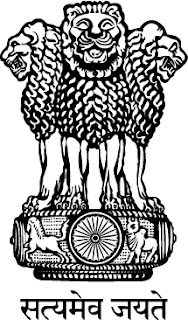
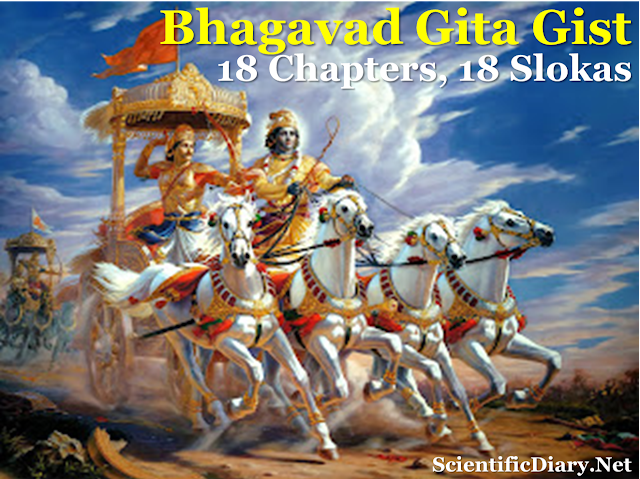
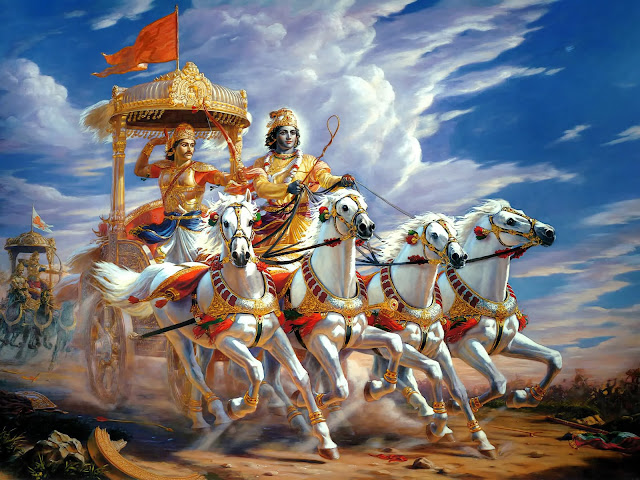
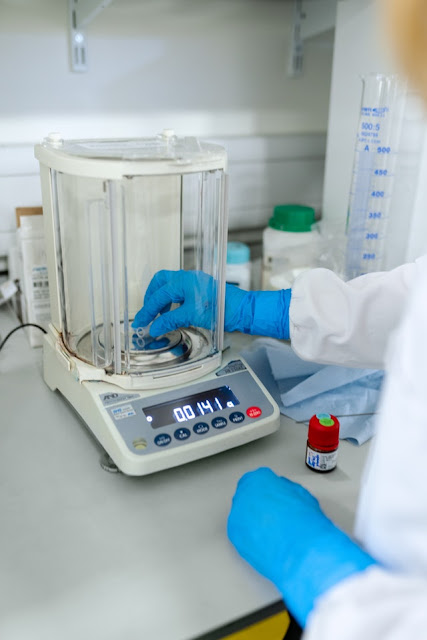

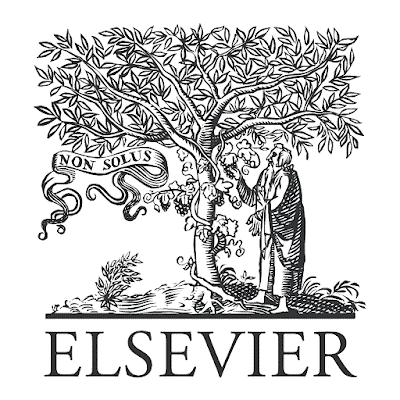

Comments
Post a Comment